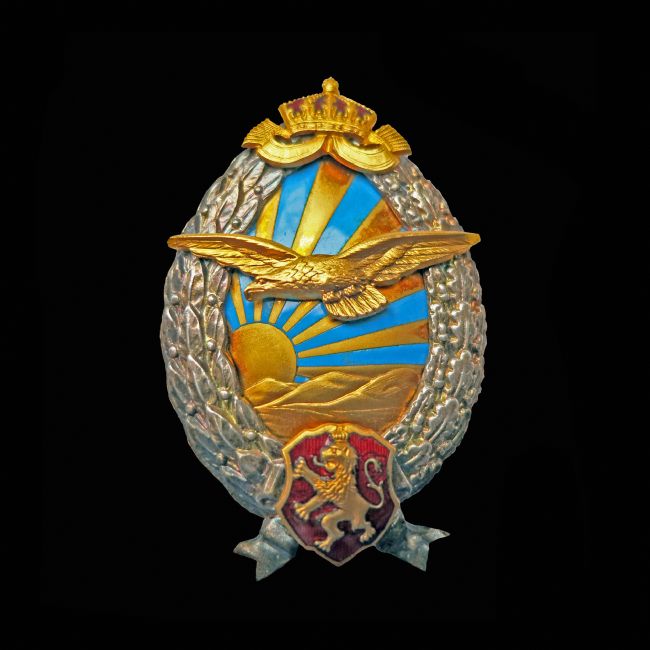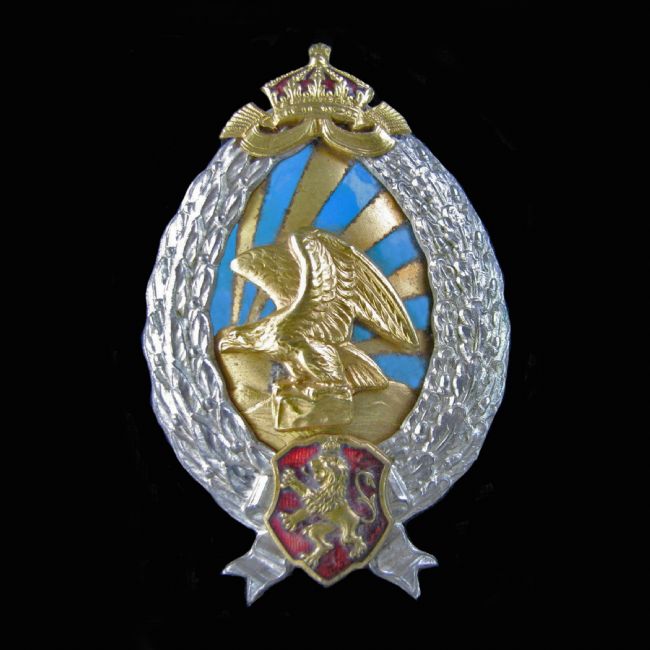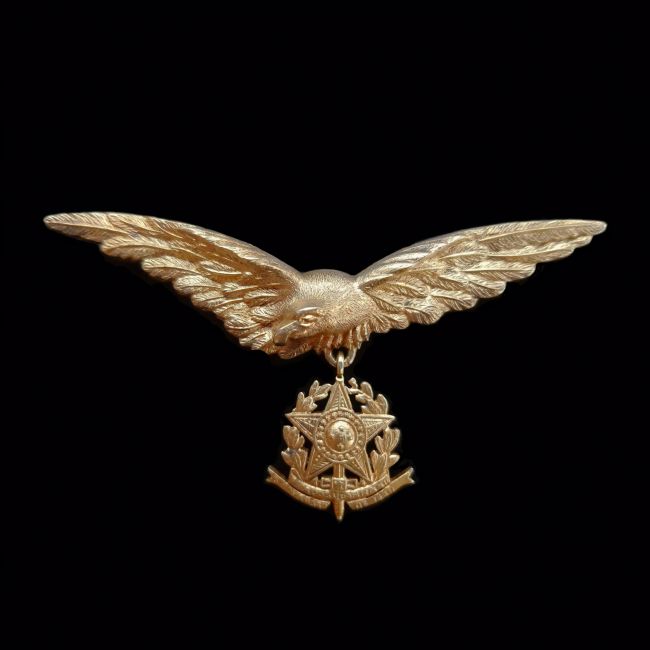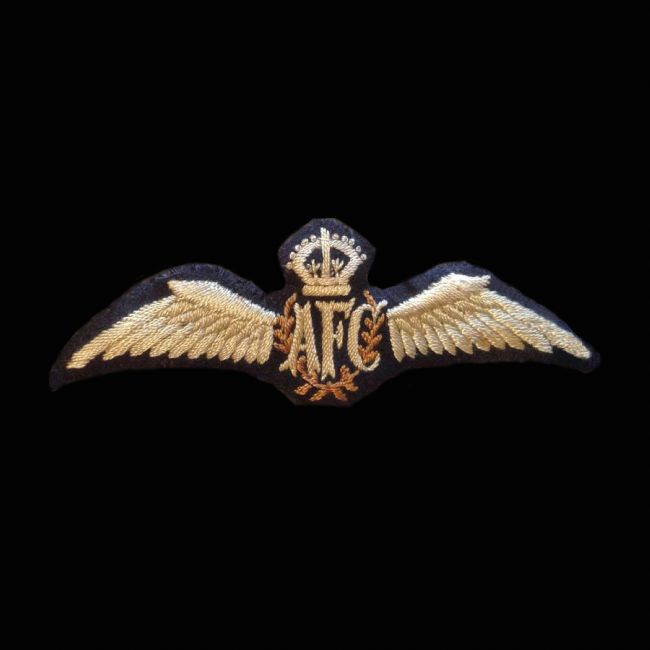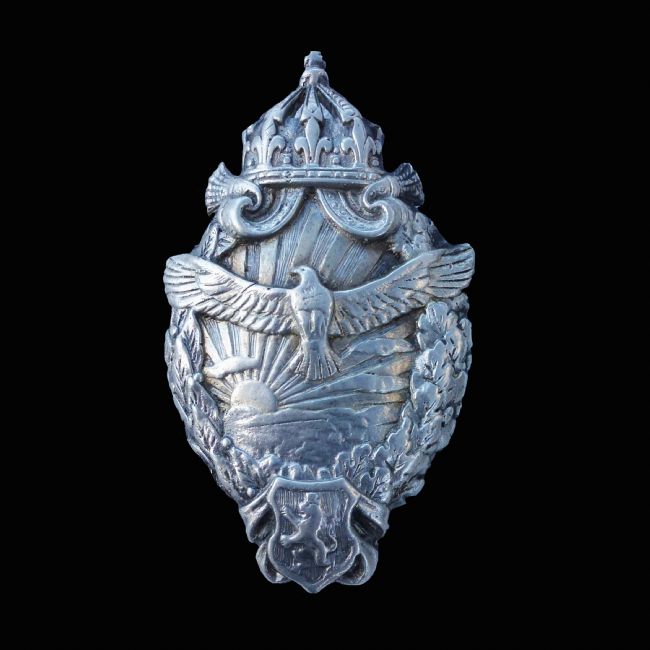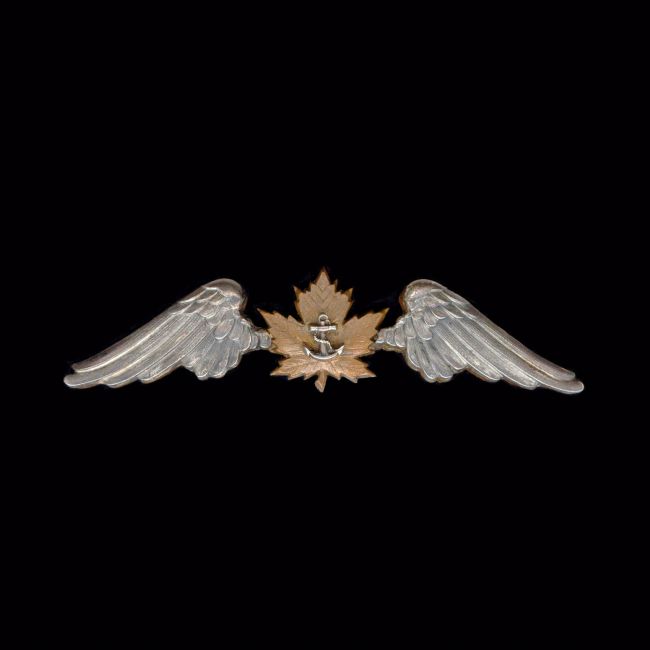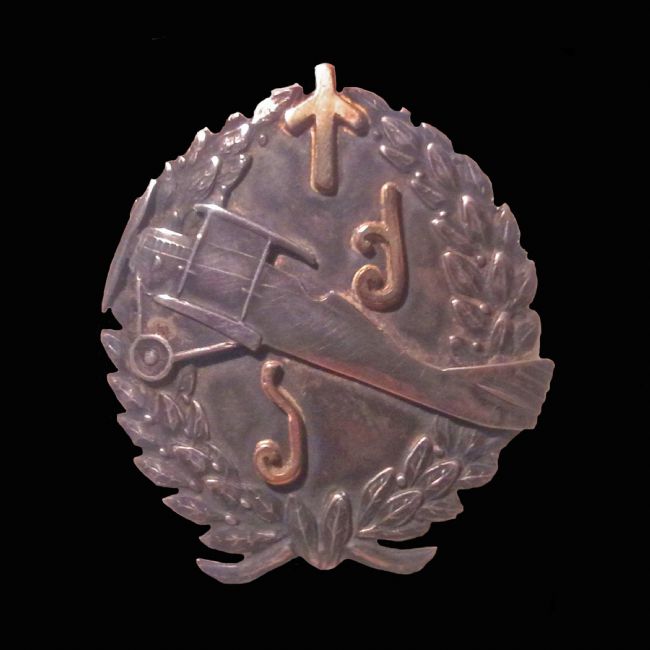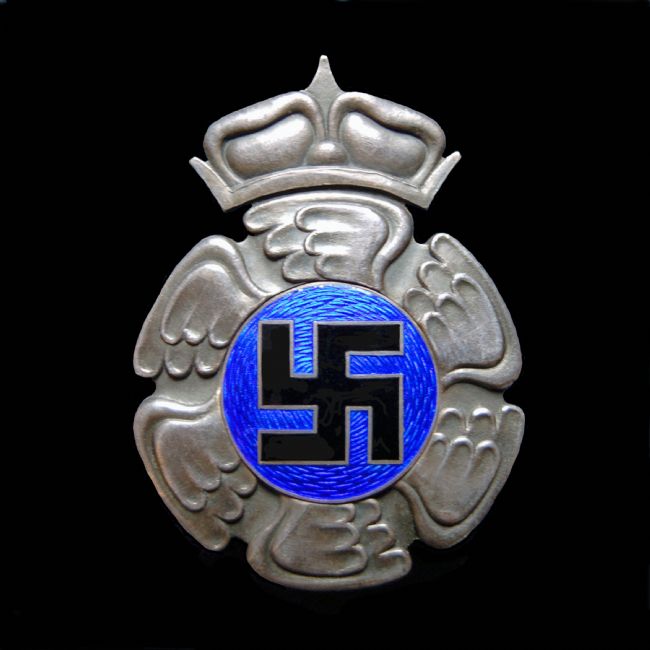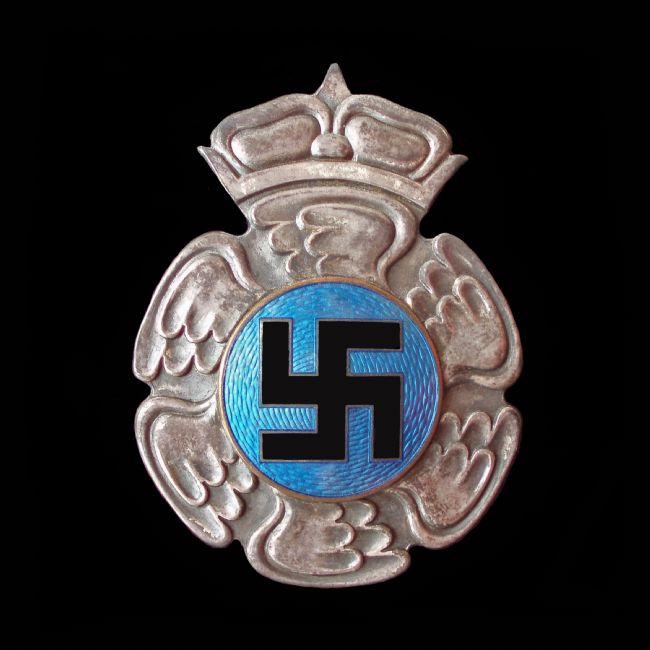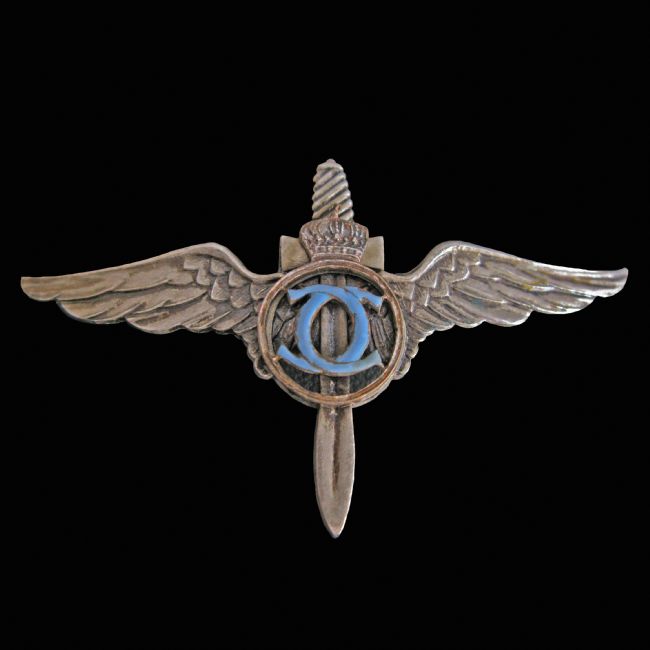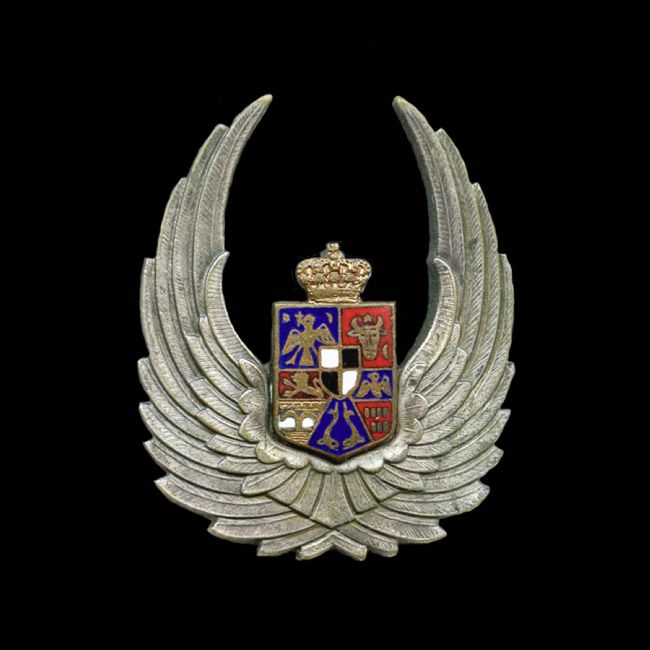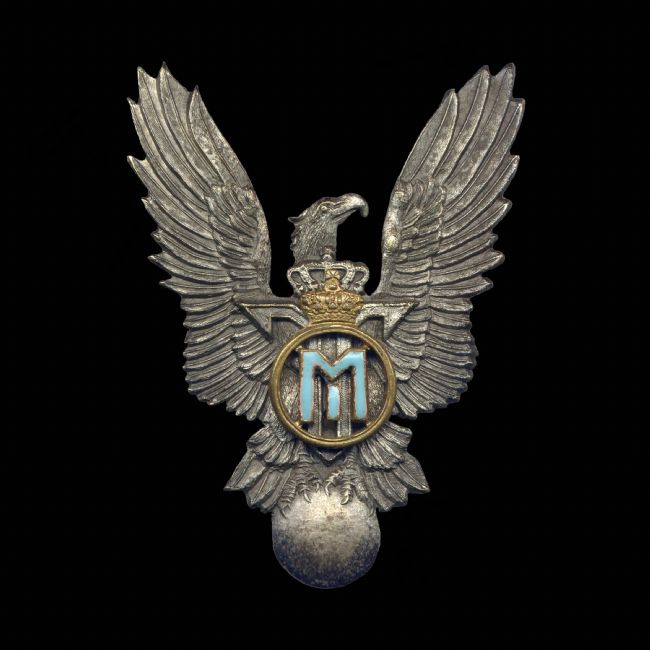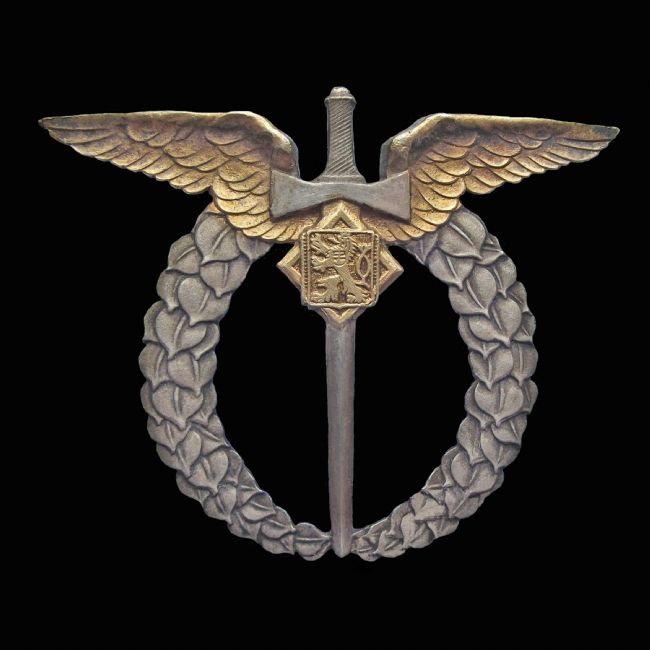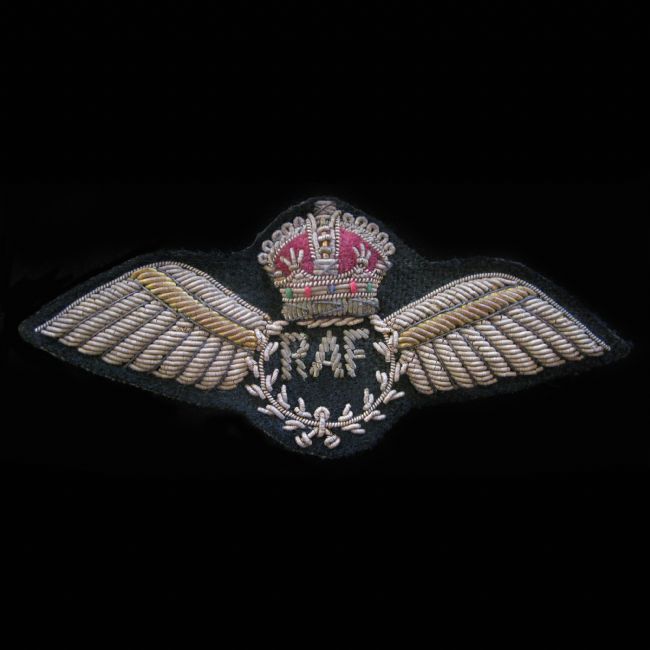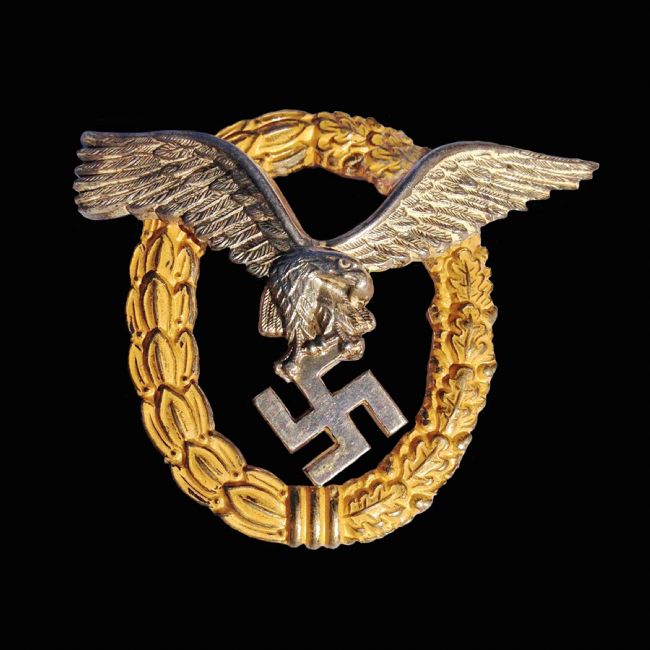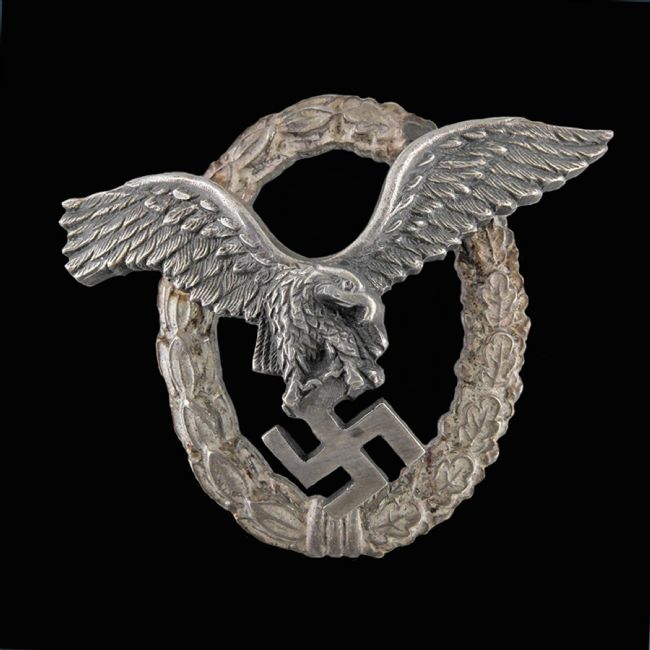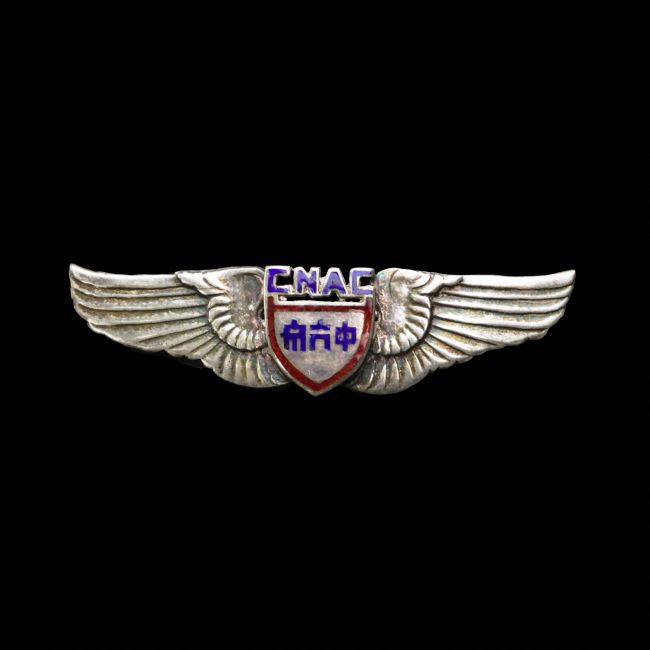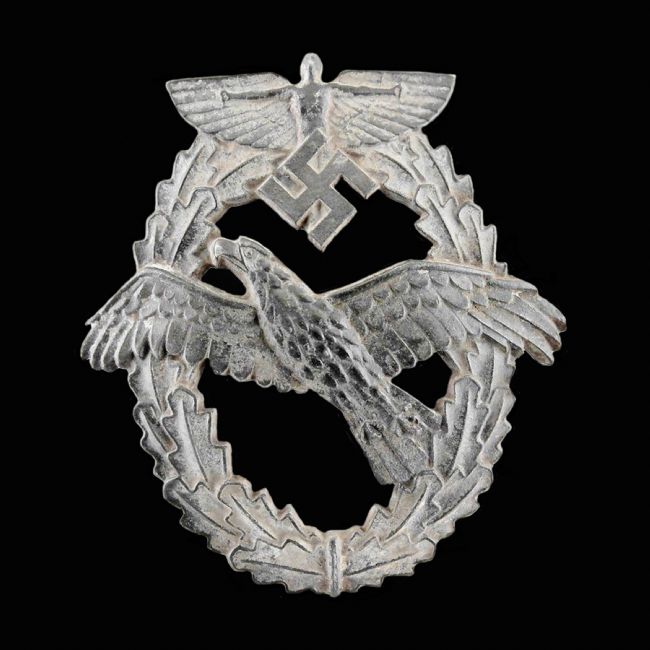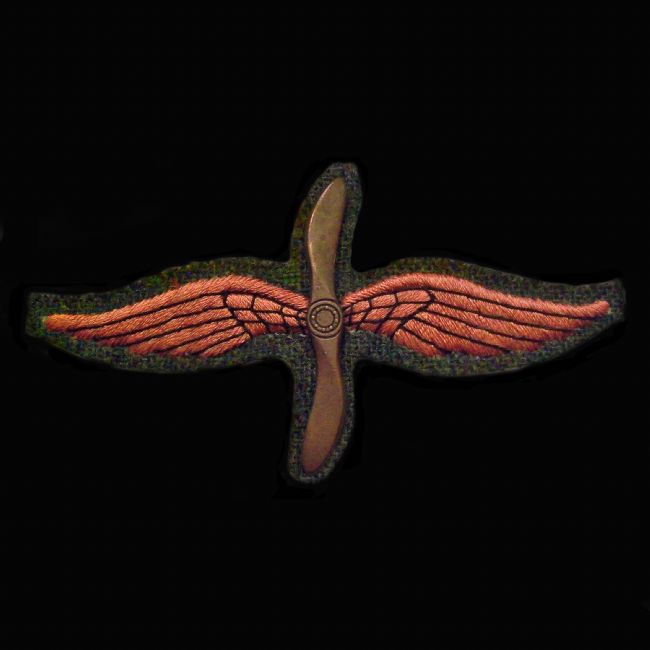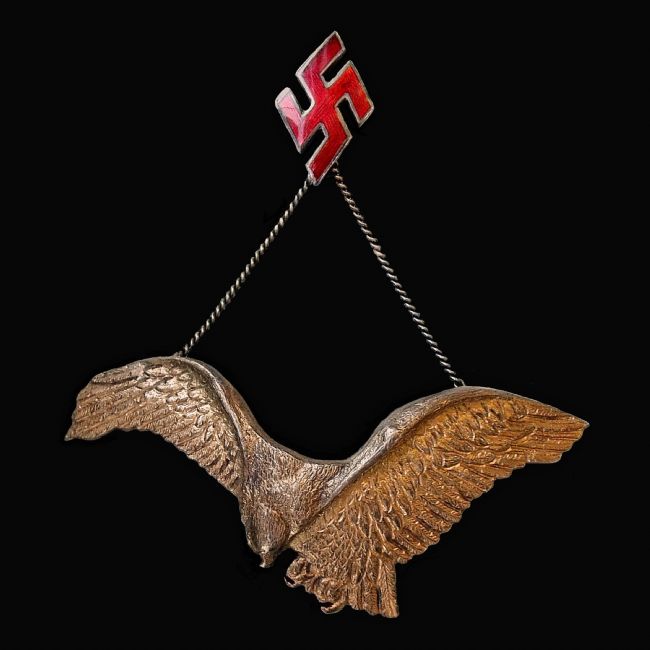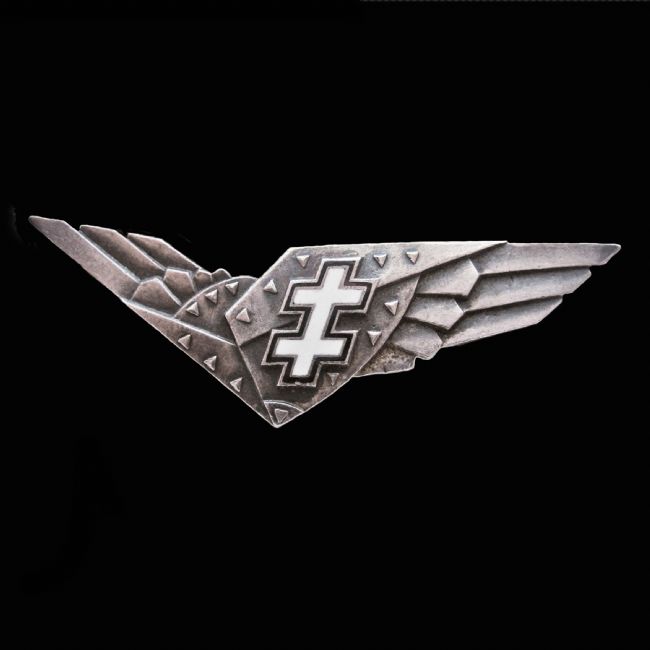Military & Associated Aviation Badges
-
Artists
-
Chris Langley
-
Military & Associated Aviation Badges
-
(0)
This badge was made in Germany by the Sedletzak company. Many German Luftwaffe pilots served with the Bulgarian Air Force before and during WW2.
This badge came into use when Bulgaria recommenced official military flying after the prohibitions after WW1 and the development of the secret air force, a sort of organisation of civilian flying clubs with a military training purpose. This badge is German made by the Sedlatzek firm. Many Germans of the Luftwaffe served with the Bulgarian Air Force during WW2. This badge was adapted by the invading Russians in 1944 by removing the state crown and replacing it with a red star or a red star with hammer and sickle. There were also Bulgarian made versions of the same badge.
This Bulgarian Observer badge is believed to be a German made badge, in use from 1916 until 1919 officially, though it is known that even after the imposition of the loss of their air force post WW1, the badge was intermittently still made, sometimes in molded form and worn as issued by retired flyers and members of the secret air force which grew as a civilian flying organisation between WW1 and WW2.
Before the formation of the Brasilian Air Force, the Army provided for military aviation matters in the 1920's and 1930s and this badge was the mark of an army pilot. This badge is rarely seen today even in substantial collections
During WW1 Australia organised its own military flying organisation, the AMF, and used two patterns of pilot badge before the official adoption of this pattern of badge in 1918. Some version similar to this were in unofficial use as early as late 1916, replacing those marked AMF. The badge changed to carry the letters RAAF (Royal Australian Air Force) in 1921.
This badge is a moulded and silver plated example of an originally WW1 issued badge. After the armistice in 1918 and through 1919, those forces which had fought on the German side, including Bulgaria, were forbidden to have an air force and consequently no uniforms or badges were allowed. However it is known that persons who had been qualified as pilots during WW1 as well as newly qualifying sports pilots of the secret air force did have and were issued with these copied badges, crude as they were.
Formulated in 1918 before the end of WW1, The Royal Canadian Naval Air Service had put to work enlisted and officer recruits while officer pilots were recruited and trained, but before the pilot recruits had completed their training policies changed and the pilot trainees were let go, the other staff were let go or incorporated into the other forces and the idea for having a Royal Canadian Naval Air Service was abandoned. There are several stories about how the wings which were made for the trainee pilots to wear on graduation were distributed but today only a small handful are known to exist, many not in good condition because of the fragile nature of the design. The wing is identical to the wing made for the proposed Canadian Air Force, worn from 1918 to 1924 except that the latter had a maple leaf replacing the anchor.
The free and independent state of Georgia from 1918 to 1921 had its own independent air force prior to being subsumed by the USSR. This very rare pilot badge is quite a different design to many of the era.
In the early days of military aviation the badges used to identify pilots varied considerably from simple to complex. In France prior to 1916 a woven badge was worn on the arm, in different patterns for enlisted men, non-commissioned officers and commissioned officers. These were made in tailor shops and conformed generally to a written description, but varied considerably in fine detail. This badge is in general conformity with the non-commissioned officer arm badge, using both woven silk and bullion wire elements on a wool backing. Some pilots did not like the arm badge and elected to wear a variety of jeweller manufactured golden birds to represent their status. In 1916 the Government designed and issued a bi-colour metal badge worn on the right breast officially and that same badge is in use today.
Standard pattern for the Finnish Air Force pilot badge from 1921 to 1944. Other similar badges are rarely seen manufactured using transparent enamel of a pale electric blue colour. There is no known reason for this variation from the vivid blue normally used. Both badges were definitely issued and worn. Please note: the use of the folded cross in this badge bears no reference to its later use by the German Nazis. Both Finland and Latvia used the folded cross as a symbol of peace and health in their state symbology prior to the Nazis using it as their Swastika and this ancient symbol is also found in use in the art of many African and Asian countries. No offense should be drawn from its inclusion in this badge .
Variation of standard pattern for the Finnish Air Force pilot badge from 1921 to 1944, this badge is unusual and rare in that it was manufactured using transparent enamel of a pale electric blue colour. There is no known reason for this variation from the vivid blue normally used. These badges were definitely issued and worn. Please note: the use of the folded cross in this badge bears no reference to its later use by the German Nazis. Both Finland and Latvia used the folded cross as a symbol of peace and health in their state symbology prior to the Nazis using it as their Swastika and this ancient symbol is also found in use in the art of many African and Asian countries. No offense should be drawn from its inclusion in this badge .
Romanian pilot badge under King Carol who reigned from 1930, replacing his minor son who had been in place under a Regency, until 1940 when he was deposed and replaced again by his son, Michael (Mihai). Carol used the inverted C's as his royal cypher. This pattern of wing was also used for civilian pilots during Carol's reign, though with the sword removed.
From 1940-1949 during the second period of reign of Michael 1 (Mihai) . The general form of the Observer badge had remained the same since the inception of military flying, first the badge during the reign of Ferdinand, then the transitional badges made during the Michael Regency, then the badges of Carol and finally the badges of Michael during and after WW2. The significant differences were the cyphers used in each reign, though there were minor differences in the swept wings of these badges also. This badge bears the Hohenzollern family crest used by Mihai.
The 1927 death of King Ferdinand brought his minor grandson to the throne under a Regency as Ferdinand's son Carol was in exile in France. The pilot badge of Ferdinand was converted with the cypher of Michael 1 (Mihai) added to it in pale blue enamel and a gold crown during this regency. When Carol returned to Romania in 1930 he became king and a new form of pilot badge was introduced. In 1940 Carol was deposed and Mihai returned to the throne and a new wing, derivative of the Ferdinand style was created.
Pattern of badge used by pilots of the Czechoslovakian air force between 1923 and 1954. This badge was made by Provaznik in Prague and dates from the 1930's. In 1954 the Soviets required a change in the design, placing a large red enamel star behind the state crest. This design was only in use for a short time in 1954 and was then replaced by a Soviet style of badge.
The independent Royal Air Force replaced the Army's Royal Flying Corps and the Navy's Royal Naval Air Service on April 1st 1918. The very first RAF wings were a misinterpretation of the design specification (ARF instead of RAF) but this was quickly sorted out and RAF wings were put into use. This wing is quite elaborate and contains both gold and silver bullion wire, somewhat against regulation and was for use on the full dress uniform of a very senior officer. The very first wing in my collection, a very long time ago.
Standard design for both the pilot and pilot/observer badges of the Nazi era Luftwaffe. The pilot badge was usually in silver only while the dual qualified pilot/observer badge carried a gold wreath. This example is an Austrian made one by GWL. The showing of the folded cross or swastika does not in any way indicate support of that regime or its policies. The purpose is to illustrate a German pilot/observer badge as found during that era.
Standard design for both the pilot and pilot/observer badges of the Nazi era Luftwaffe. The pilot badge was usually in silver only while the pilot/observer badge carried a gold wreath. This example is an Austrian made one by BSW (Bruder Schneider Wien). The showing of the folded cross or swastika does not in any way indicate support of that regime or its policies. The purpose is to illustrate a German pilot badge as found during that era.
CNAC was not strictly a military organisation but it was largely staffed by pilots of American origins and others, including members of the Flying Tigers once the Japanese took control of much of China during WW2. CNAC pilots flew across the Himalayas (called flying the hump) keeping the military supply routes open, the supply roadways being occupied. These routes were very difficult and many pilots and their aircraft did not survive. CNAC ties to the US military and intelligence organisations was high.
Youth pilots of the NSFK, a cadet movement preparing for the Nazi era Luftwaffe. The showing of the folded cross or swastika does not in any way indicate support of that regime or its policies. The purpose is to illustrate a German NSFK motor pilot badge as found during that era.
Enlisted pilot badges of France, worn on the left sleeve before 1916, were typically all woven into a wool or cloth backing . This example is unusual in that the propeller is attached over the top and made of bronze. Non commissioned officer's badges were typically a combination of woven silk and metallic bullion, with variations in colour. Officer's badges were normally all metallic bullion. Some pilots eschewed the arm badge and unofficially wore instead one of many golden bird jewelry pieces on the left breast. In 1916 a totally different metal badge was issued for wear on the right breast.
Latvian military air service comprised both army and naval aviation. All members of this small group, land or sea plane based, wore this badge on their left breast, high on the shoulder. It was not specifically for pilots, though pilots also wore this badge. The one worn by officers was gilded, the one worn by other ranks and NCOs was silver in colour. Both bore the national red folded cross (swastika), a symbol totally unrelated to its later use by the German Nazi party. It is an ancient symbol of peace and health found throughout history, especially in Asia. Its use by the Nazi party in Germany was a perversion of its meaning.
An honour badge for pilots with 10 years of service. The Lithuanian Air Force came into being in the early 1920's and was subsumed into the Soviet Air Force when Lithuania was invaded in 1940. It had been a very small air force in a very small country, with few pilots. After the fall off the Soviet empire the Baltic States including Lithuania regained their independence and rebuilt their small forces, once again using a rather poor copy of this sturdy badge to honour senior pilots.
This is the actual badge (#2) which would have been awarded to the Romanian Cosmonaut Lt. Col. Dumitru Dediu had he completed his mission training and flown in space with the Soviet InterCosmos program. Sadly the InterCosmos program which allowed cosmonauts from other eastern bloc nations to fly on Soviet missions was cancelled before Dediu had the opportunity to fly. The only Romanian Cosmonaut to go into space (1981) was Dumitru-Dorin Prunariu whose cosmonaut badges are on display in the Military aviation museum in Bucurest, Romania. Dumitru Dediu passed away in 2013.
